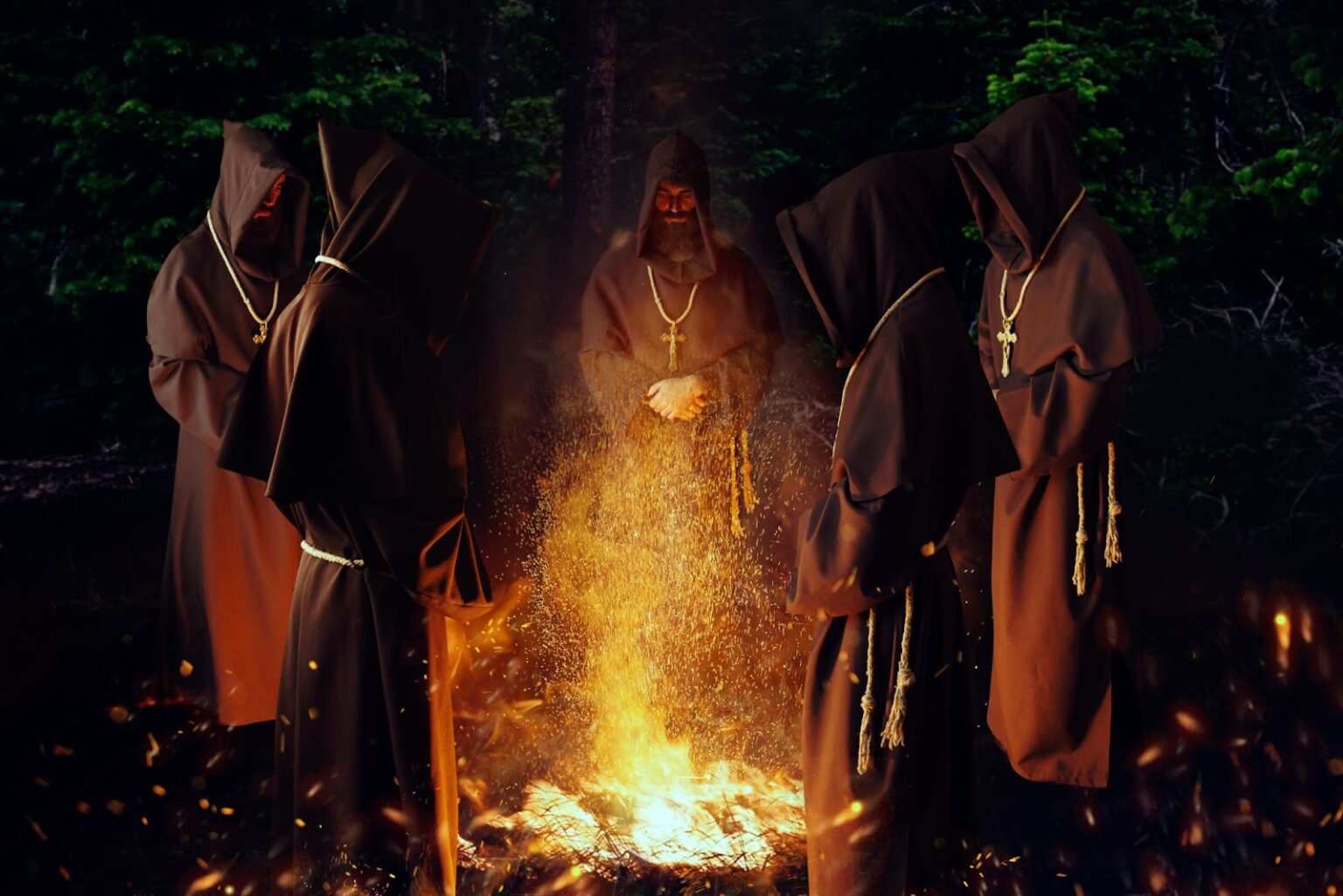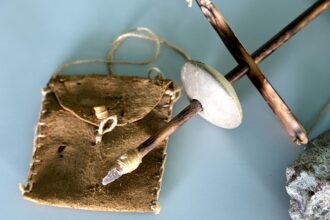The brown monk robe shows humility, simplicity, and a life devoted to God. Many monks, especially in Franciscan orders, Divinity Clergy Wear brown to reflect their vows of poverty and service. The color brown reminds people of the earth, showing that monks stay grounded in faith and live without luxury. Over time, the design of the robe has stayed simple but strong. It often includes a hood, a rope belt, and wide sleeves for ease during daily prayers and chores. Today, the brown robe still shows a monk’s call to serve, pray, and live quietly. It connects the past and present, reminding others of the deep roots of Christian devotion. Whether worn in monasteries or during special church events, the brown monk robe is a powerful sign of a holy and humble life. Let’s dive into the story of this sacred garment.
1. What Is a Monk Robe?
A monk’s robe, often called a habit, is a simple yet meaningful garment worn by members of religious communities. Unlike the ornate attire seen in other parts of society, monk robes are designed to be modest and practical. The simplicity of these robes reflects a life dedicated to prayer, service, and community rather than worldly appearances.
Main Parts of a Monk Robe:
- Tunic: A loose, flowing garment that covers the body.
- Cowl: A hood that serves as both protection and a reminder of monastic life.
- Scapular: A cloth worn over the shoulders, often used for practical tasks.
- Belt (or cincture): A rope tied around the waist, sometimes with three knots representing the monk’s vows.
Each part of the robe holds significance, helping the wearer remember their calling to live simply and humbly.
2. Why Brown?
In the world of monastic attire, color plays an important role. Brown, in particular, is chosen because it symbolizes humility, earth, and simplicity, qualities central to the monastic life.
The Significance of Brown:
- Humility: Brown reflects the monk’s commitment to living a humble life, away from material wealth.
- Poverty: It represents the vow of poverty, reminding the monk to renounce worldly possessions.
- Service: The color also symbolizes the monk’s life of service to others and the community.
- Simplicity: Brown stands for simplicity, a core value in monastic life, helping the monk focus on spiritual matters rather than outward appearance.
Unlike more vibrant colors, brown doesn’t call attention to itself. Instead, it encourages the wearer to focus on inner growth and service.
3. The Monk Robe and Catholic Priest Garb
Though monks and priests have different roles in the Church, there are clear connections between the two in their attire. While catholic priest garb, is often more elaborate, with items like albs, stoles, and chasubles, the brown monk robe has influenced the design of some of these garments. Both types of clothing share core values of faith, humility, and service.
How Monk Robes Influence Catholic Priest Garb:
- Simplicity: Some priests today embrace simpler, more humble styles that mirror the monk’s robe.
- Earth Tones: Brown, gray, and other muted colors have become more popular in priestly attire, reflecting the same values found in monastic clothing.
- Comfort: Just as monks wear robes designed for comfort during long hours of prayer and labor, some priests also opt for loose-fitting, comfortable clothing for their daily duties.
The brown monk robe has left its mark on the broader tradition of Catholic attire, reminding clergy of their call to serve with humility and dignity.
4. How the Robe Was Made
Monk robes are crafted to be both durable and practical, designed to withstand the rigors of monastic life. They are often handmade, with attention given to both the functionality and the symbolism of each stitch.
Features of a Well-Made Brown Monk Robe:
- Fabric: Typically made from wool or heavy cotton, the fabric is sturdy enough to handle the demands of work and weather.
- No Zippers or Buttons: The robe’s simple design includes ties or belts rather than fasteners, reflecting the monk’s rejection of worldly luxuries.
- Loose Fit: The robe is intentionally loose to allow for movement, while also maintaining modesty.
- Large Sleeves: The broad sleeves provide ease for work and prayer, and allow the wearer to focus on spiritual matters without distraction.
The robe’s design matches the monastic commitment to simplicity and purpose. Every aspect of the robe is made with thoughtfulness and intention.
5. The Robe as a Symbol
For monks, wearing the brown robe is an act of devotion. It is a constant reminder of their vows and the life they have chosen.
Symbolism of the Monk Robe:
- Separation from the World: By wearing the robe, the monk publicly signals his separation from worldly distractions and his dedication to a life of prayer.
- Commitment to Faith: The robe is a symbol of the monk’s deep commitment to living a life focused on faith.
- Community and Service: The robe also reflects the monk’s place in a monastic community, where life revolves around mutual support, prayer, and service.
Every time a monk dons the robe, it is an intentional act of renewing their commitment to God and their fellow community members.
6. Identity Through Color
In the monastic tradition, the color of a monk’s robe helps identify their religious order and their specific calling. Each order adopts a color that reflects its unique mission.
Examples of Monastic Colors:
- Brown: Worn by Franciscans, symbolizing humility and service to the poor.
- Black: Worn by Benedictines, representing silence and dedication to study.
- White: Worn by Cistercians, symbolizing purity and contemplation.
The brown monk robe, worn by many orders, immediately identifies the monk as someone committed to a life of simplicity and devotion to God.
7. The Counter-Reformation and the Return to Simplicity
During the Counter-Reformation in the 1500s, the Church sought to return to the roots of Christian faith, which included a return to simplicity in attire. The brown monk robe, along with other plain habits, became a powerful symbol of this renewed focus on spiritual devotion over worldly display.
How the Counter-Reformation Influenced Monk Robes:
- Return to Tradition: Religious orders returned to the traditional simple habits of earlier centuries, rejecting the ornate clothing that had become common.
- Focus on Humility: The brown monk robe, with its simple design, fit perfectly with the Church’s emphasis on humility and service.
- Rejection of Worldliness: The Counter-Reformation encouraged clergy and religious orders to embrace simplicity, as seen in the plain brown robes worn by monks.
This return to simplicity was a powerful statement of faith and devotion, rejecting materialism in favor of spiritual purity.
8. Monastic Fashion Through Time
Though always simple, the appearance of monk robes has evolved over the centuries. While the core values of simplicity and humility remain unchanged, the robes have undergone some modifications.
Evolution of Monk Robes:
- Early Church: Monk robes were basic tunics made from handwoven fabric, typically in natural shades of gray or brown.
- Medieval Period: During the Middle Ages, rules for monastic clothing were formalized, with specific guidelines on what was appropriate for each order.
- Modern Day: Some monks wear traditional robes, while others opt for lighter, more practical fabrics to accommodate the demands of contemporary life. However, the essence of the robe remains the same: a commitment to humility and service.
9. The Brown Robe’s Impact on Modern Clothing
Though rooted in religious tradition, the brown monk robe has made its mark on modern fashion. Many designers look to the simplicity and earthy tones of the monk robe for inspiration.
Influence on Modern Fashion:
- Minimalist Styles: Loose, robe-like coats and simple, natural fabrics are inspired by the monastic robe.
- Earthy Tones: Brown, gray, and other muted colors often appear in minimalist fashion collections, reflecting the timeless appeal of the brown monk robe.
- Tie Closures: The use of simple tie closures, rather than buttons or zippers, is a nod to the practicality and modesty of the monk robe.
Despite the passing of centuries, the brown monk robe’s influence continues to resonate in today’s fashion.
10. Why This Still Matters Today
In today’s world, where trends often prioritize flashy appearances, the brown monk robe serves as a reminder of deeper values: faith, simplicity, and service to others.
What We Can Learn from the Brown Monk Robe:
- Simplicity is Powerful: The robe teaches us that less can be more, and that simplicity often leads to deeper spiritual fulfillment.
- Focus on Service: The brown robe reminds us that serving others is more important than personal appearance.
- Reflection of Identity: What we wear can be a reflection of who we are and what we value.
For monks, priests, and all Christians, the brown monk robe is a powerful symbol of faith, reminding us of our calling to serve God and others.
Final Thoughts
The brown monk robe may seem simple at first glance, but it carries with it a wealth of meaning and history. From the early days of monastic life to today’s modern interpretations, the robe remains a strong symbol of faith, humility, and service. Whether worn by monks or remembered in fashion, the brown monk robe continues to remind us of what truly matters in life, a devotion to God, to service, and to living humbly. Even today, its influence can be seen in the design and spirit of catholic priest garb, bridging ancient tradition with modern ministry.

















